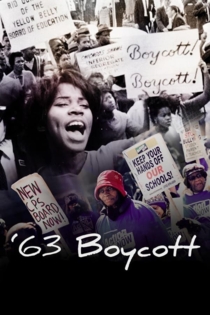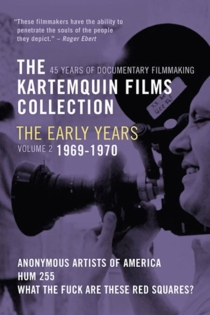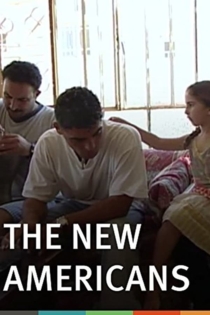
Gordon Quinn
2021Now We Live on Clifton
Susan Delson, Richard Schmiechen
Now We Live on Clifton follows 10 year old Pam Taylor and her 12 year old brother Scott around their multiracial West Lincoln Park neighborhood. The kids worry that they'll be forced out of the neighborhood they grew up in by the gentrification following the expansion of DePaul University.
Now We Live on Clifton

Thumbs Down
Gordon Quinn, Gerald Temaner
In this cinema-verite documentary, a teenage youth group called Thumbs Down decides "to bring Christ to their neighborhood" by holding an anti-war Mass at their conservative Chicago parish. Neither militants nor hippies, they simply believe that Christianity means social action and concern with issues. They present this belief to the community and the confrontation reveals the deepening crisis of communication between the young Christians and their parents, priest, and neighbors.
Thumbs Down

Golub
Jerry Blumenthal, Gordon Quinn
Leon Golub
Leon Golub's massive canvasses depict scenes most of us would prefer not to see - mercenary killings, torture, and death squads. Golub offers not simply a profile of a painter with a political conscience, but an investigation into the power of the artist to reflect our times and to change the way we think about our world.
Golub

Taylor Chain II: A Story of Collective Bargaining
Jerry Blumenthal, Gordon Quinn
In 1981-2, the Kartemquin filmmakers returned to the Taylor Chain plant to show labor and management working together against the odds, trying to save the plant from becoming the latest victim of anti-union legislation and the globalization of cheap, exploitable labor. A sequel to Taylor Chain I: A Story in a Union Local.
Taylor Chain II: A Story of Collective Bargaining

Golub: Late Works Are the Catastrophes
Jerry Blumenthal, Gordon Quinn
The work and times of American artist, Leon Golub from 1985 to his death in 2004, taking us from images of interrogations and torture to the ironies and dark humor of old-age.
Golub: Late Works Are the Catastrophes

'63 Boycott
Gordon Quinn
On October 22, 1963, more than 250,000 students boycotted the Chicago Public Schools to protest racial segregation. Many marched through the city calling for the resignation of School Superintendent Benjamin Willis, who placed trailers, dubbed ‘Willis Wagons,’ on playgrounds and parking lots of overcrowded black schools rather than let them enroll in nearby white schools. Combining unseen archival 16mm footage of the march shot by Kartemquin founder Gordon Quinn with the participants’ reflections today, ’63 Boycott connects the forgotten story of one of the largest northern civil rights demonstrations to contemporary issues around race, education, school closings, and youth activism.
'63 Boycott

Hum 255
Anthony Thomas, Jerry Blumenthal
In 1968, striking students at the University of Chicago occupied an administration building. A year later, two expelled young women were asked by their former classmates to talk about the experience as a class project. The women confront the students about their convictions and how far they are willing to go to defend their values.
Hum 255

Taylor Chain I: A Story in a Union Local
Jerry Blumenthal, Gordon Quinn
Taylor Chain I tells the gritty realities of a seven-week strike at a small Indiana chain factory during 1973-74. Volatile union meetings and tension-filled interactions on the picket line provide an inside view of the tensions and conflicts inherent to labor negotiations. Due to a lack of funds and a fire at Kartemquin which necessitated a re-edit of the film, the film was not released until 1980. Filming then began a year later on Taylor Chain II: A Story of Collective Bargaining.
Taylor Chain I: A Story in a Union Local

Marco
Gordon Quinn, Gerald Temaner
Barbara Temaner
Disbelief, shock, hostility and superstition confronted the wife of one of the filmmakers when she decided to give birth without pain medication using the Lamaze method of childbirth. Her tale is about trusting oneself and accepting responsibility even when it means rejecting popular beliefs and establishment authority.
Marco

Where's I.W. Abel?
Gordon Quinn
Made by Kartemquin and a rank-and-file steel workers caucus, the film documents the opposition of the rank-and-file to the no-strike agreement between Steelworkers President I.W. Abel and the ten major steel companies, made without a vote by the membership of the union.
Where's I.W. Abel?

Winnie Wright, Age 11
Suzanne Davenport, Greg Grieco
Winnie, the daughter of a steel worker and a teacher, lives in Gage Park, a Chicago neighborhood that is changing from white to black. Her family struggles with racism, inflation and a threatened strike, as Winnie learns what it means to grow up white, working class, and female.
Winnie Wright, Age 11




